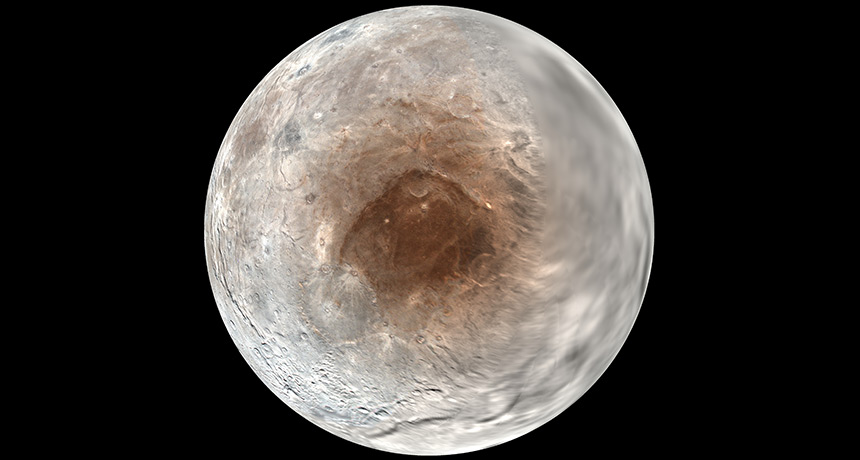Source of Charon’s red north pole is probably Pluto

Methane from Pluto plus UV light from the sun are responsible for Charon’s red pole, seen in this mosaic of images from the New Horizons spacecraft.
NASA, JHUAPL, SWRI

Methane from Pluto plus UV light from the sun are responsible for Charon’s red pole, seen in this mosaic of images from the New Horizons spacecraft.
NASA, JHUAPL, SWRI